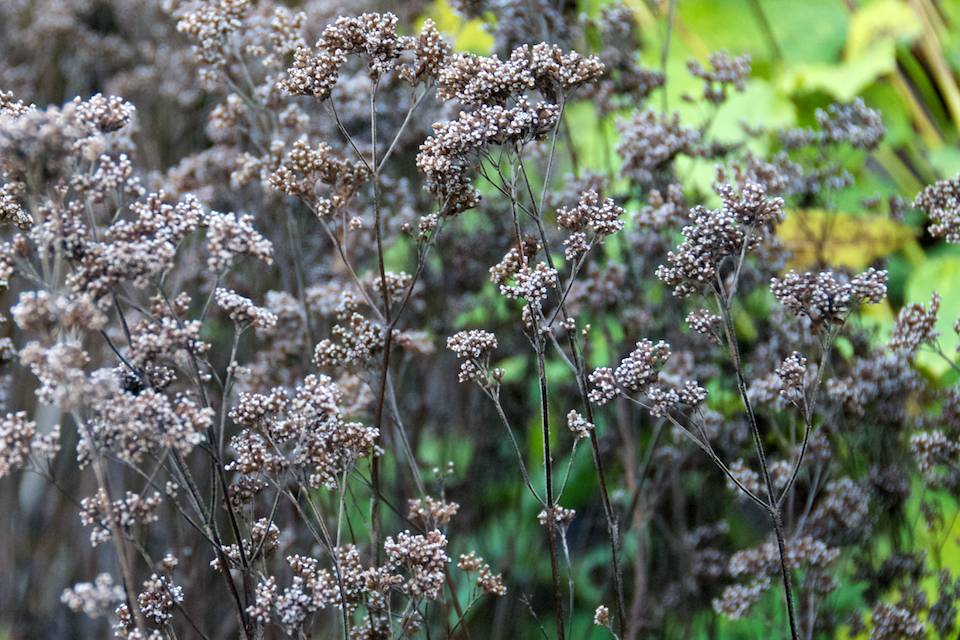Leading on from Horticultural Renaissance of Wildflowers, this is the second post in the series; the interview with Sarah Raven highlighting not only her passion for wildflowers, but their importance to the natural habitat; the countryside.
Introducing Sarah Raven is pointless. Any serious gardener will know her for her skill in growing tantalising fruit and vegetables, pulling off colour combinations worthy of Christopher Lloyd, command of wild flowers and respective pollinators, and turning (any) garden (and other) produce into the most delicious dishes. All of this can be read in her books, magazine articles, seen on television, perused on her website, or demonstrated in person at her farm; Perch Hill. When not at Perch Hill, Sarah, her husband Adam Nicolson, and their two daughters live at Sissinghurst Castle with its famous gardens in Kent. Sissinghurst is part of the National Trust, but as grandson of Harold Nicolson and Vita-Sackville West; creators of the famous gardens, the family are able to live there in perpetuity.
Commended as she should be for mind boggling good, time management skills, it is Sarah’s passion for all things horticultural, that is so compelling. Hardly surprising as gardening and a love of plants runs through her very DNA. Sarah is the daughter of John Raven, English Classics Scholar and renowned Botanist, and Faith Raven, designer of Docwra Manor Garden in Cambridgeshire.
A Botanist’s family
The pages of John (and Faith) Raven’s enthralling book; A Botanist’s Garden, reveal their love for their garden, consisting of plants that he described as those, ‘we ourselves collected, occasionally in Britain but almost always from abroad, in their natural stations’. All above board explained Raven amusingly, with plant import licences and not as an ‘illicit occupation’, going to lengths, ‘such as gum-boots or sponge bags, to snuggle the loot through the customs’. Raven’s personable book is not just a botanical marvel, but throughout, exposes his stern respect for the natural habitat. He makes it abundantly clear that ‘we never dig up a plant unless it was locally abundant’. A mindset very much core to Sarah, in her general approach to gardening, but also endeavours to safeguard the natural countryside and the pollinators that depend on it.
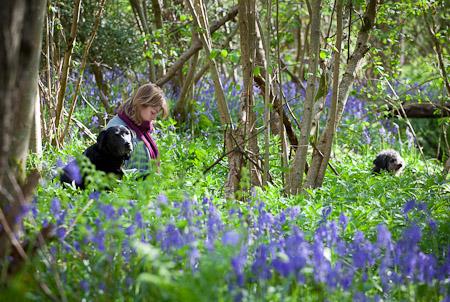
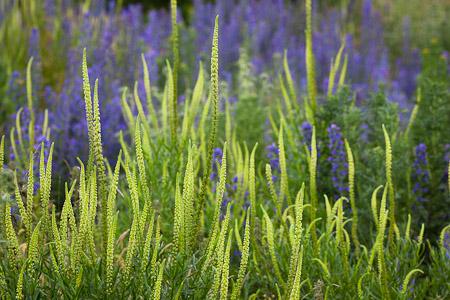
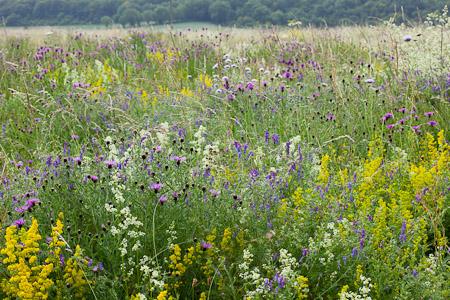

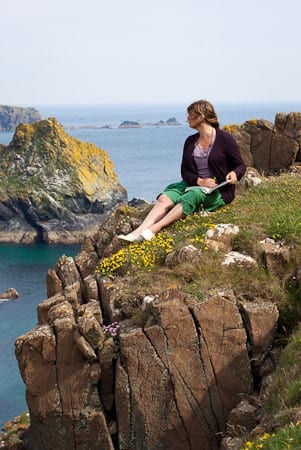

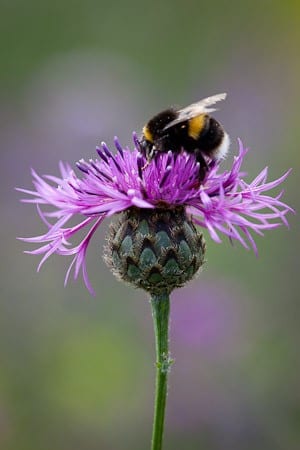
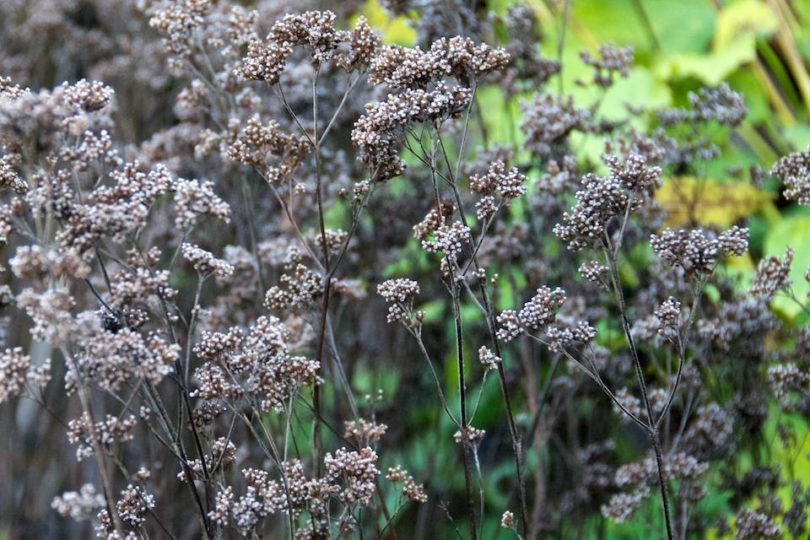
It was Sarah’s father, who instilled in her, the love for wildflowers. She explained that most weekends, they would head off, in his Morris Minor, armed with ‘two ham sandwiches and a large bar of fruit and nut, to find flowers’. A sizable bar of chocolate, would tempt any child, but be it bribery or otherwise, it certainly had an impact even beyond his daughter, where subsequently many others have been encouraged to follow suit. To admire wildflowers that is, not to eat large bars of fruit & nut…
Here is what she had to say.
Why do you have such a passion for wildflowers?
‘For me it’s something that I enjoyed doing as a child and therefore have a particular affection for wildflowers. Over the last 20 years I turned away from them, to other garden plants and activities, but it is in some way in my blood. There are a lot less than there were when I was a child, and things that used to be terribly common are now rare. Those that were absolutely everywhere, now are quite exciting to find. As a result, I became more interested in wildflowers, and therefore decided to do this huge book on them because we need to rekindle or rediscover wildflowers. Or for people who haven’t ever been in love with our wildflowers to fall in love with our wildflowers, because we have the most incredible and beautiful range of things in the most incredible and beautiful places. Few people realise they’re there, that is just a great loss. It gives me great pleasure, and I just feel more people should know about it’.
In your book, you mention that ‘there’s nothing stuck up about the great British wildflower’. Did you mean that the appreciation thereof is perceived to be solely for those in the know about botany?
Yes. I do think that. I think that it’s perceived as being a bit nerdy, or just the preserve of the gentry, elderly, grey-haired lady type thing. It has somehow gone out of fashion. I think even the word botanising is scary, it gives it almost too grandiose a feel. Similarly, that is why, bird watching became twitching, to include everybody, and not put anyone off. When one is stuck on a motorway in a terrible traffic jam, in a flower rich part of the world, like we were earlier in the summer with one of my children, it was great to see whether they could identify the plants as we were going past. Many they couldn’t, but hopefully next time, they might. For me it is just getting people to notice, rather than simply cruising around on our road systems, going for walks with our dogs and literally just turning a blind eye to the flowers. The whole idea of the book is to get people to think ‘oh, yes, that’s that one, I’ll go and look it up now’. Hopefully, when they see it next time they will remember it, then move on to the next one. That is how I learnt, hopefully others will do too’
Is there a danger of the specific wildflower varieties becoming extinct?
‘Definitely. There is a fantastic organisation called, Plantlife, and they raise awareness about those that are on the verge of extinction. A shocking statistic brought that all home to me. I was doing some filming in Northamptonshire, when Andrew Byfield, Landscape Conservation Manager at Plantlife, said that in Northamptonshire one plant will become extinct every year, because it’s so intensively farmed. That is not the case for the UK, but it is to that county. There are many counties like that, so, we’re in quite a radical, threatening time’.
What should one do?
‘I do feel that we just need to be very careful. There’s no point telling people to fall in love with the countryside. What we need to do is to get people to actually engage with it so that they care. No point standing on Speakers’ Corner. I spent so much time enjoying it as a child, and still can, and I feel really passionately that we need better understanding between people and plants in the countryside. The whole thing about never picking a wildflower is actually a great mistake. That’s how I learnt; picking something, bring it home and identify it. My father always had very strict rules; you could only pick one in 100, and if there wasn’t 100, then you jolly well didn’t pick it. But when I was able to pick one, I’d have it by my bed, and remember it, and that’s why I cared about it. Whereas, if people are just told they can’t pick the flower, it doesn’t have the same effect, unfortunately.’
You are much involved in the protection of our pollinators, where on the of scale of importance are wildflowers to them?
‘Incredibly. The more we draw on our natural habitat the more important they become. The trouble is we have destroyed so much of their natural habitat that we really need to think about restoring as many flowers as possible. Particularly wildflowers because our insects have evolved to feed from them. So, as much as the dahlia is a fantastic thing from Mexico, and I absolutely love them, and single dahlias being very good for nectar, not all our insects have the right mouthparts to feed on them. Whereas wildflowers that have evolved here, have done so specifically for particular insects. We need to remember that’.
What about the danger of cross-pollination with cultivated varieties?
‘There are two that immediately spring to mind; the bluebell and the native daffodil. There is much debate about the native bluebell and the Spanish bluebell. The Spanish Bluebell, which is the garden form, and hence common to many gardens, is not actually the problem because it will only grow in sun. The problem arises where it cross-fertilises with the native, the hybrid is born. The hybrid has the vigour of the Spanish, but the shade tolerance of the English, and that is a threat to the pure genetics of our native bluebell. The cover of my new book is actually a bluebell, because it is a supremely beautiful plant. If it wasn’t in such abundance, we’d probably treat it with much more reverence. The other example is our native wild narcissus, the Pseudonarcissus, where just by our and councils planting on roadsides, of quite coarse daffodils, there will be some muddling of the genetics of that as well. So to answer your question, we definitely need to be aware of it, but we also shouldn’t get too hyped up about it’.
Do you use wildflowers for any other purposes than purely visual, culinary, or medical, or otherwise?
Not as such, though I use comfrey and forage wood sorrel as they’re so abundant. There’s samphire from Norfolk, which I love. So mostly foraging but as for medicinal, no not personally. Though wild flowers, do have medicinal value. Goosegrass (Galium Aparine), or as some people call it ‘Sticky Willy’, is the most incredible connective tissue healer. It is used to treat bad leg ulcers for example, very effectvely, by or making a poultice out of mushed up goosegrass. The Jodrell Laboratory at Kew runs an ongoing research project, where visitors fill out forms on any herbal remedies that they knew of that their grandparents or great grandparents used, and subsequently their teams investigate those that often repeat.
Wildflowers are becoming more popular, such as at Chelsea Flower Show, Hampton Court, etc., particularly umbellifers. Do you anticipate this being translated to the general public through local garden centres?
As 80% of gardeners get access to the plants through their garden centres, I would passionately encourage garden centres to get behind local native wildflowers. Local garden centres have a huge effect and influence on what appears in our gardens, and that’s why, if you walk down the street in an urban environment, gardens often look very similar. That is because they have all gone to the same garden centre. Fifteen years ago it was the Lavatera, and it was in every single front garden. Before that it was pampas grass, and so forth. So yes, it is really important that garden centre owners and buyers take a really good look into the whole wildflower thing. Afterall, the umbelliferea are very trendy with designers at the moment. There’s a great fashion at the moment for airy elegance, plants that don’t fill out at ground level but are airy and translucent.
Finally, could you tell me what the difference is, between pictorial and a wildflower meadow?
They are totally different. Almost always, pictorial seed packets don’t include native wildflowers. Or at least certainly a low proportion of them. The main distinguishing feature between wildflower mixes and pictorial meadows, is that wildflower mixes tend to be perennial, for growing into grass. Not always, but they tend to be, whereas the pictorial meadows are specifically wasteland annuals, so they are cornfield weeds. Many don’t realise that cornflowers, corn poppies and corn cockles, are actually contaminants of grain, that came to this country as long ago as with the Romans. So they are actually not British natives. Extending on from that therefore, the pictorial meadows are not for grass, but simply for the flowers.
Sarah has travelled the length and breadth of the country, to document a staggering 500 wild flowers into her new mammoth opus, ‘Wild Flowers by Sarah Raven’. If you are planning to take this magnificent book with you on your botanising trips into the countryside, make sure you carry a big bag…
